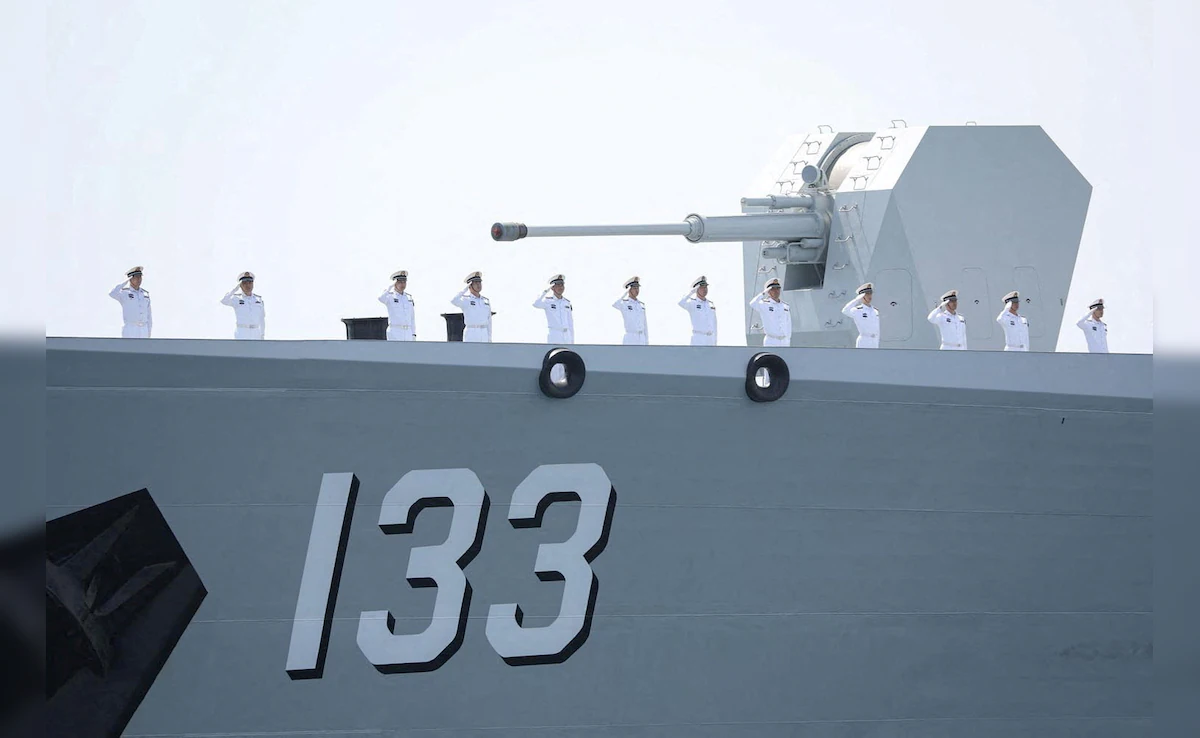Beijing’s Bold Naval Maneuvers Escalate Tensions Across East Asia
In a significant display of military strength, China has ramped up its naval presence in East Asian waters throughout May, inciting concern among neighboring countries. Security officials and documents reveal that the People’s Liberation Army Navy (PLAN) has deployed an unprecedented number of naval vessels, including guided-missile frigates, destroyers, and coast guard boats, across critical maritime regions. The uptick in activity raises questions about China’s intentions in a region already fraught with geopolitical tensions.
As per regional military assessments, between May 21 and May 27, China reportedly dispatched close to 60 and over 70 ships, respectively, to areas surrounding Taiwan, southern Japanese islands, and across the East and South China Seas. This robust military presence includes two aircraft carrier groups—namely the Shandong operating in the crowded South China Sea and the Liaoning positioned near the southeastern coast of Taiwan—indicating a strategic move aimed at solidifying China’s maritime claims.
The maneuvers come at a time when global geopolitical dynamics are in flux, drawing scrutiny from several regional players. “They are exerting pressure on the whole of the first island chain amid global geopolitical uncertainties,” stated a security official familiar with the situation. The first island chain strategically stretches from Japan through Taiwan to the Philippines, enclosing the waters surrounding China’s coastline.
This recent military activity has raised alarms. “China clearly wants to show these are its home waters and it can operate when and where it wants,” noted one anonymous source, highlighting Beijing’s goal of enhancing its maritime dominance. The intensified naval drills, particularly those executed by the Liaoning aircraft carrier, have reportedly included simulated attacks on foreign vessels and aircraft, further underscoring China’s assertive posturing.
Increasing Naval Drills and Regional Reactions
In the last fortnight, China has designated multiple live-fire military drill zones off its coast, including one that faced southwestern Taiwan, prompting a terse response from its neighbors. Chinese state-run media revealed visual reports of amphibious drills conducted in the southern province of Fujian, across the Taiwan Strait, though with scant details on the precise locations of these activities.
Japan has been closely monitoring the movements of the Liaoning and its accompanying fleet as they navigate through the southern Japanese islands and into the Western Pacific. Yoshimasa Hayashi, Japan’s Chief Cabinet Secretary, remarked, “The Japanese government intends to keep a close eye on relevant movement and do its utmost in carrying out monitoring and surveillance activities.” This statement illustrates Japan’s growing vigilance in response to China’s maritime ambitions.
Furthermore, the ongoing tensions have not only affected Japan but also have implications for the Philippines, which have been involved in a standoff with China in the South China Sea. China’s foreign ministry recently admonished the Philippines to cease alleged “infringement and provocation,” asserting its presence in what it terms as its territorial waters.
Admiral Roy Vincent Trinidad, the spokesperson for the Philippine Navy on South China Sea matters, criticized China’s maritime actions, labeling them as “illegal” and counterproductive to regional peace. He stressed that such activities run contrary to Beijing’s claims of a “peaceful rise.”
Impact on Taiwan Amid Heightened Military Activities
The rise in military activities culminates contemporaneously with Taiwan President Lai Ching-te commemorating his first anniversary in office, during which China has instigated multiple rounds of military drills in light of what it describes as a “separatist” leader. The Taiwanese defense ministry reported on Wednesday the presence of the Liaoning near Taiwan’s southeastern coast, which has compelled Taiwan to elevate its combat readiness.
“We are prepared to respond to any threats,” stated a spokesperson from Taiwan’s defense ministry, reflecting the heightened state of alert island-wide. This reflects the critical balancing act Taiwan faces amid increasing pressure from across the strait, aligning its military posture with perceived threats and provocations.
As international observers analyze these developments, the potential for miscalculations leading to conflict looms large, leaving the regional stability hanging in the balance. Experts warn that the recent uptick in naval movements could trigger an arms race in the region, pushing neighboring countries to bolster their own naval capabilities.
International Implications
The situation in East Asia is increasingly drawing attention from global players, with the United States expressing support for its regional allies amid China’s assertiveness. Following a series of military drills conducted by Beijing, U.S. officials have reiterated their commitment to Taiwan’s defense and shared interests in maintaining a free and open Indo-Pacific.
As the geopolitical landscape continues to evolve, it is essential for countries affected by China’s naval activities to strengthen diplomatic dialogue to avert escalation. American analysts have pointed out that a lack of communication channels among involved parties could lead to unintended escalations, stressing the need for transparent military engagements to foster trust.
For a deeper understanding of East Asian maritime security issues, check out[this report](https://www.reuters.com/article/us-asia-security-idUSKBN2B40V4), which delves into the broader implications of China’s growing military prowess. Additionally, insights into Taiwan’s defense strategies can be found in[this article](https://www.taipeitimes.com/News/front/archives/2023/05/23/2003806121), outlining how the island is preparing to counter threats from across the strait.
As global observers monitor the ongoing developments closely, the stakes remain high for regional stability, marking a pivotal moment in East Asia’s security narrative.
DISCLAIMER
We have taken every measure to ensure that the information in this article and on our social media platforms is accurate, verified, and obtained from reliable sources. For feedback or complaints, please contact us at info@hamslive.com.


